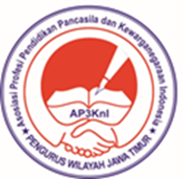Development Model of AI (Artificial Intelligence) - Based Learning Media in Madrasah Ibtidaiyah
DOI:
https://doi.org/10.24269/dpp.v13i2.10868Abstract
Integrating Artificial Intelligence (AI) into learning media must be aligned with the learning component to function optimally in teaching and learning activities. The study analyzes urgency, selection criteria, and procedures for developing AI-based learning media. This study employs a qualitative approach using a library research method. Data were collected through a systematic review of books, journal articles, and other credible academic sources relevant to the research topic. The research instrument in this research is documentation, which involves identifying, selecting, and interpreting relevant written materials. Data analysis used content analysis techniques to identify patterns, themes, and key concepts related to the research focus. The results of this study show that the importance of AI-based learning media in Madrasah Ibtidaiyah can be reviewed from an independent curriculum perspective and a technology perspective. AI-based learning media criteria can be seen from the extent to which they are compatible with learning system components, such as learning objectives, learning materials, learning media, teachers, and educators. Procedures include analyzing the conditions and needs of learning components, formulating AI-based learning media designs, and implementing such designs. The implications of this research suggest that when developed systematically, AI-based learning media can enhance effectiveness.
References
Aji Silmi, T., & Hamid, A. (2023). Urgensi Penggunaan Media Pembelajaran Berbasis Teknologi. Inspiratif Pendidikan, 12(1), 69–77. https://doi.org/10.24252/ip.v12i1.37347
Amir Hamzah. (2020). Metode Penelitian Kepustakaan (Library Research. Literasi Nusantara Abadi.
Ashshiddiqi, M. H. (2024). Pemanfaatan AI dalam Era Kurikulum Merdeka: Perspektif Siswa dan Guru Sekolah Menengah. JDPP, 12(1).
Basu, R. (2021). Instructional Design Models: Benefits and Challenges. UGC Approved, 41(1), 31–36. https://www.researchgate.net/publication/352771683_Instructional_Design_Models_Benefits_and_Challenges
Cahyadi, R. A. H. (2019). Pengembangan Bahan Ajar Berbasis Addie Model. Halaqa: Islamic Education Journal, 3(1), 35–42. https://doi.org/10.21070/halaqa.v3i1.2124
Chen, X., Xie, H., Zou, D., & Hwang, G.-J. (2020). Application and theory gaps during the rise of Artificial Intelligence in Education. Computers and Education: Artificial Intelligence, 1, 100002. https://doi.org/10.1016/j.caeai.2020.100002
Garcia, C., Argelagós, E., & Privado, J. (2023). Information skills instruction in Higher Education students using the 4C/ID model. 9th International Conference on Higher Education Advances (HEAd’23), 137–144. https://doi.org/10.4995/HEAd23.2023.16149
Hidayat, F., & Nizar, M. (2021). Model Addie (Analysis, Design, Development, Implementation and Evaluation) Dalam Pembelajaran Pendidikan Agama Islam. Jurnal Inovasi Pendidikan Agama Islam (JIPAI), 1(1), 28–38. https://doi.org/10.15575/jipai.v1i1.11042
Hildayah, D. (2019). Penggunaan Media Visual, Auditif, dan Kinestik untuk Meningkatkan Hasil Belajar Siswa. Prosiding Seminar Nasional Pendidikan FKIP, 2(1), 137–146.
Iskandar, H., Koto, I., Yulanto, D., & Marlan, M. (2022). Instructional Design of Successive Approximations Model (SAM) for Project-Based Learning Media Development. https://doi.org/10.4108/eai.11-10-2022.2325511
Jeroen J. G. van Merriënboer. (2019). The Four-Component Instructional Design Model An Overview of its Main Design Principles. School of Health Professions Education.
Jung, Kim, Lee, and S. (2019). Advanced Instructional Design for Successive E-Learning: Based on the Successive Approximation Model (SAM). International Jl. on E-Learning, 2(18), 191–204. https://www.researchgate.net/publication/331829482_Advanced_Instructional_Design_for_Successive_E-Learning_Based_on_the_Successive_Approximation_Model_SAM
Kulik, J. A., & Fletcher, J. D. (2016). Effectiveness of Intelligent Tutoring Systems. Review of Educational Research, 86(1), 42–78. https://doi.org/10.3102/0034654315581420
Latif, A., Rohmiyanti, W., Syafira, I., Wahiddatul, S., & Haryanto, A. D. (2021). Penggunaan Media Pembelajaran berbasis Game Edukasi sebagai Upaya Meningkatkan Minat Belajar Siswa Sekolah Dasar. SEMAI: Seminar …, 809–825.
Lei, G. (2023). Influence of ASSURE model in enhancing educational technology. Interactive Learning Environments, 1–17. https://doi.org/10.1080/10494820.2023.2172047
Lukman Hakim. (2022). Peranan Kecerdasan Buatan (Artificial Intelligence) dalam Pendidikan. Ppg.Kemendikbud.Go.Id. https://ppg.kemdikbud.go.id/news/peranan-kecerdasan-buatan-artificial-intelligence-dalam-pendidikan
Miftah, M., & Nur Rokhman. (2022). Kriteria pemilihan dan prinsip pemanfaatan media pembelajaran berbasis TIK sesuai kebutuhan peserta didik. Educenter : Jurnal Ilmiah Pendidikan, 1(9), 641–649. https://doi.org/10.55904/educenter.v1i9.92
Muhartini, Amril Mansur, & Abu Bakar. (2023). Pembelajaran Kontekstual dan Pembelajaran Problem Based Learning. Lencana: Jurnal Inovasi Ilmu Pendidikan, 1(1), 66–77.
Mukti, F. . (2023). Transformasi Pendidikan di Sekolah Dasar: Pemanfaatan Media Peembelajaran Berbasis Kecerdasan Buatan dalam Era Digital. Dirasatul Ibtidaiyah, 3(2), 229–240.
Munthe, M. Z. (2021). Model Pembelajaran Dick and Carey Serta. Model Pembelajaran Dick and Carey Serta Implementasinya Dalam Pembelajaran Pai, 1–9.
Nursamsu, & Kusnafizal, T. (2017). Pemanfaatan Media Pembelajaran ICT sebagai Kegiatan Pembelajaran Siswa di SMP Negeri Aceh Tamiang. Jurnal IPA Dan Pembelajaran (JIPI), 1(2), 165–170.
Pérez-Castán, J. A., Pérez Sanz, L., Fernández-Castellano, M., Radišić, T., Samardžić, K., & Tukarić, I. (2022). Learning Assurance Analysis for Further Certification Process of Machine Learning Techniques: Case-Study Air Traffic Conflict Detection Predictor. Sensors, 22(19), 7680. https://doi.org/10.3390/s22197680
Safitri, M., & Aziz, M. R. (2022). ADDIE, sebuah model untuk pengembangan multimedia learning. Jurnal Pendidikan Dasar, 3(2), 50–58. http://jurnal.umpwr.ac.id/index.php/jpd/article/view/2237
Shoffa, S. (2021). Buku Media Pembelajaran. In Bintang Sutabaya (Issue January).
Shoffan Shoffa, et al. (2021). Perkembangan Media Pembelajaran di Perguruan Tinggi (Issue February).
Sugiyono. (2022). Metode Penelitian Kuantitatif Kualitatif dan R&D (II cet-4). Alfabeta.
Zahwa, F. A., & Syafi’i, I. (2022). PEMILIHAN PENGEMBANGAN MEDIA PEMBELAJARAN BERBASIS TEKNOLOGI INFORMASI. Equilibrium: Jurnal Penelitian Pendidikan Dan Ekonomi, 19(01), 61–78. https://doi.org/10.25134/equi.v19i01.3963
Downloads
Published
Issue
Section
License
Copyright (c) 2025 Hurril Bariroh, Ashari Ashari

This work is licensed under a Creative Commons Attribution 4.0 International License.
Copyright
Authors who publish their manuscripts in this journal agree to the following terms:
- The copyright on each article belongs to the author.
- The author acknowledges that Jurnal Dimensi Pendidikan dan Pembelajaran has the right to be the first to publish under a Creative Commons Attribution 4.0 International (Attribution 4.0 International CC BY 4.0) license.
- Authors may submit articles separately, arranging for the non-exclusive distribution of manuscripts that have been published in this journal to other versions (e.g., sent to the author's institutional repository, publication into books, etc.), acknowledging that the manuscript was first published in the Jurnal Dimensi Pendidikan dan Pembelajaran.
Â
License
Use of the article will be governed by the Creative Commons Attribution license as currently published under the Creative Commons Attribution 4.0 International License (Attribution 4.0 International (CC BY 4.0).
Â
This license permits anyone to copy and redistribute this material in any form or format, compose, modify, and make derivatives of this material for any purpose, including commercial purposes, as long as they give credit to the author for the original work.


_001.jpg)



